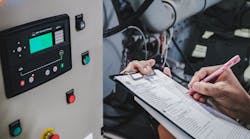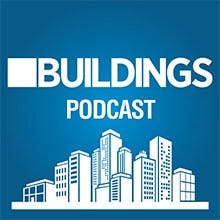How well is your facility equipped to meet your needs this year? Next year? Five years from now? Taking a close look at each piece of equipment will show you a definitive answer.
Standardize the process with a facility condition assessment. It’s a useful tool for assessing your equipment’s ability to meet your needs. Data on equipment health can help you:
- Plan for upcoming expenditures
- Predict the equipment’s remaining life
- Focus your preventive maintenance where it’s needed most
Why Do a Facility Condition Assessment?
A facility condition assessment is all about determining “the ability for a facility to meet an intended purpose or enable an activity,” explains David Auton, senior director of reliability engineering for C&W Services.
“What you’re really doing with a facility condition assessment is very similar to what we do in other risk analysis scenarios,” Auton says. “In business, we often do a risk assessment of the business. What’s the current condition of my business? What’s the probability that I could run into issues with finances, employment, inventories, etc.? They have to identify what’s key to the operation and support structure and what’s likely or probable to be an issue. That’s the same approach we take with a facility condition assessment.”
How Do Facility Condition Assessments Work?
Facility condition assessments start with a comprehensive inventory of your equipment and related infrastructure, Auton says. In its simplest form, this is a list of the equipment you maintain. It should include demographic information to help you identify each one uniquely, such as age, location and capacity.
You’ll add the results of condition assessments to this list as you complete them. This registry helps identify what kind of preventive programs you need, Auton explains.
Start by defining your facility’s mission and goals. How does equipment condition impact the facility’s ability to meet your needs? A data center, for example, should provide an environment that enables data processing, keeping data physically and virtually protected, and so on.
“Key components of a data center are the ability to provide consistent, redundant power systems and the ability to provide cool, humidity-controlled air, so that your equipment has power and is in a cool environment where it can operate,” Auton says.
AHR Expo: Ever-Changing Facilities Industry
Christoph Trappe speaks with Sudhi Sinha, VP & GM, Data Enabled Business, from Johnson Controls about the dynamically changing environment in facilities management and how facility managers and owners can keep at the forefront. Listen now >>
[podcast]
“From that, you’d start with, ‘Well, my critical subsystems are supply power and cooling capacity.’ Then from that, you’d work on what makes up your supply power,” adds Auton. “I have the grid power from the street coming in. Do I have one supply source, or do I have two? Do I have redundancy? When was it installed? What condition is it in?”
Each building system is then broken up into individual pieces of equipment. Each one will have its condition determined separately.
The assessment of equipment condition is based on three components:
1. Performance
“Has it consistently performed, or has it had multiple issues?” asks Auton. “From that, you can put it on a scale from ‘It works well and we never have to do any maintenance on it’ to ‘It’s always failing and we’re always working on it.’”
2. Age
Most people use this factor to ballpark equipment life, and for good reason. It usually correlates with more frequent breakdowns and a higher need for repairs. In some cases, advanced age can mean less availability for repair parts even if the equipment runs well. Case in point: refrigerant.
“Air conditioning equipment 15 years ago was running on R-22 refrigerant, but most statutory requirements are that you have to eliminate that because it’s hard on the environment,” says Auton. “The aging equipment has components that suggest that you want to upgrade it for those reasons.”
3. Current observed conditions
“If I go up and look at it, and it’s really dirty and rattling and all the skins and covers are banged up, then I would rate it lower based on its current observed condition,” Auton explains.
How to Use the Results
Create a metric with which to interpret your results by defining how you’ll score the different aspects of the assessment.
You might decide to use a simple scale of 0-10, with 0 being a machine that only has a few days of life left and a 10 being a brand-new piece of equipment. Total the scores from the three assessment categories above to create an aggregate score representing the condition. You can also weight the importance of the different categories depending on how important each one is to you.
Develop a different scoring method that works for you, but the point is that you need to come up with a way to objectively score the condition of each piece of equipment. Figure out what constitutes an acceptable score.
In the simple 0-10 ranking above, you might decide “acceptable” means a total score over 24 (8 + 8 + 8). You’ll then compare the scores of like pieces of equipment and the average scores across a facility. “The gap between acceptable and actual becomes the discussion point,” Auton says.
Doing this assessment for every piece of equipment will give you a much clearer picture of your facility’s health, Auton says. It will also help you determine where to target investments. You might discover that you need additional funding to avert a crisis.
“What my assessment tells me is either the facility is currently capable of meeting the defined need and all we have to do is put in a maintenance program, or it’s lacking in several areas,” adds Auton.
Annual Preventive Maintenance
Build ongoing condition assessments into annual preventive maintenance tasks. Track the scores in a computerized maintenance management system (CMMS) if you have one. Automating part of the process will make the whole thing much easier to track.
“If you make it part of the job plan as part of an annual PM, then you have the technical experts who maintain that equipment giving you a pretty fair assessment of it,” Auton explains. “Then it’s integrated as a work step process and not a separate activity. Ideally, your facility condition assessment should directly feed into your asset management planning.”
An integrated approach like this means you always have accurate information about your facility’s ability to meet your organization’s needs. You also have an easy-to-understand format to show decision-makers at your facility why you need to replace that aging unit.
The headaches, equipment breakdowns and emergency repairs you’ll avoid are worth the initial investment of time and labor.
Two handpicked articles to read next:




